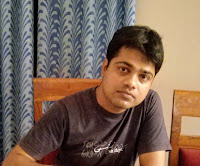The Axe by R.K. Narayan: A Complete Study

About the author of The Axe: The Axe is a very popular story. It has been written by R.K. Narayan (Rasipuram Krishnaswami Narayan). He is perhaps the most reputed of Indian English writers today. He was born on 10 October 1906 in a south Indian Brahmin family in Madras (the present Chennai). After graduation he devoted himself to writing. His first novel Swami and Friends appeared in 1935. It was well appreciated in England and elsewhere. Among his more famous novels are Mr. Sampath, The Financial Expert, The Guide, The Man-Eater of Malgudi and The Dark Room, The Bachelor of Arts, The English Teacher, Waiting for the Mahatma etc. His most famous collection of short stories is Malgudi Days . Narayan's novels and stories emanated from his own regional experience. A fictitious town Malgudi is always at the centre of his writing. The description of Malgudi is natural and full of realism. He wrote simple stories about common man. He presented life as he saw it. (TEXT) The Axe by R.